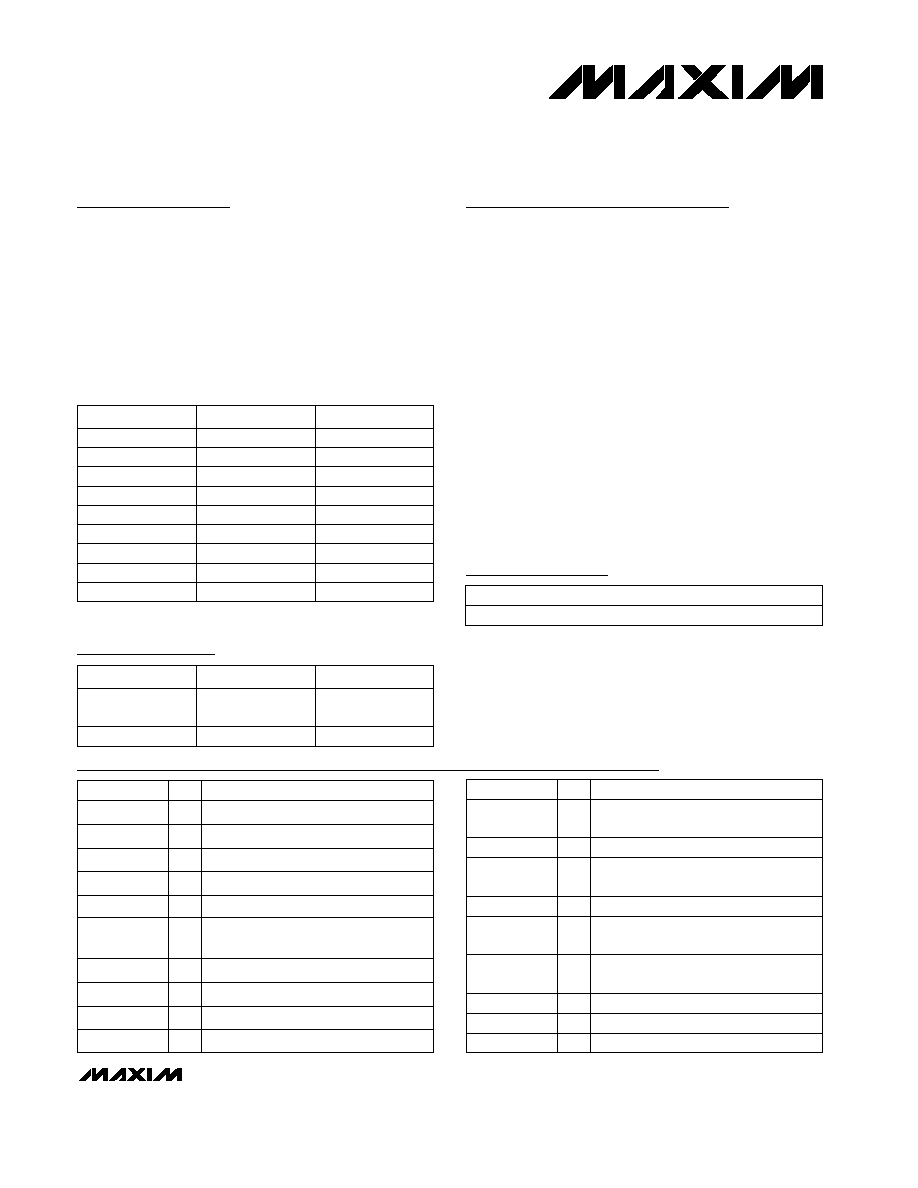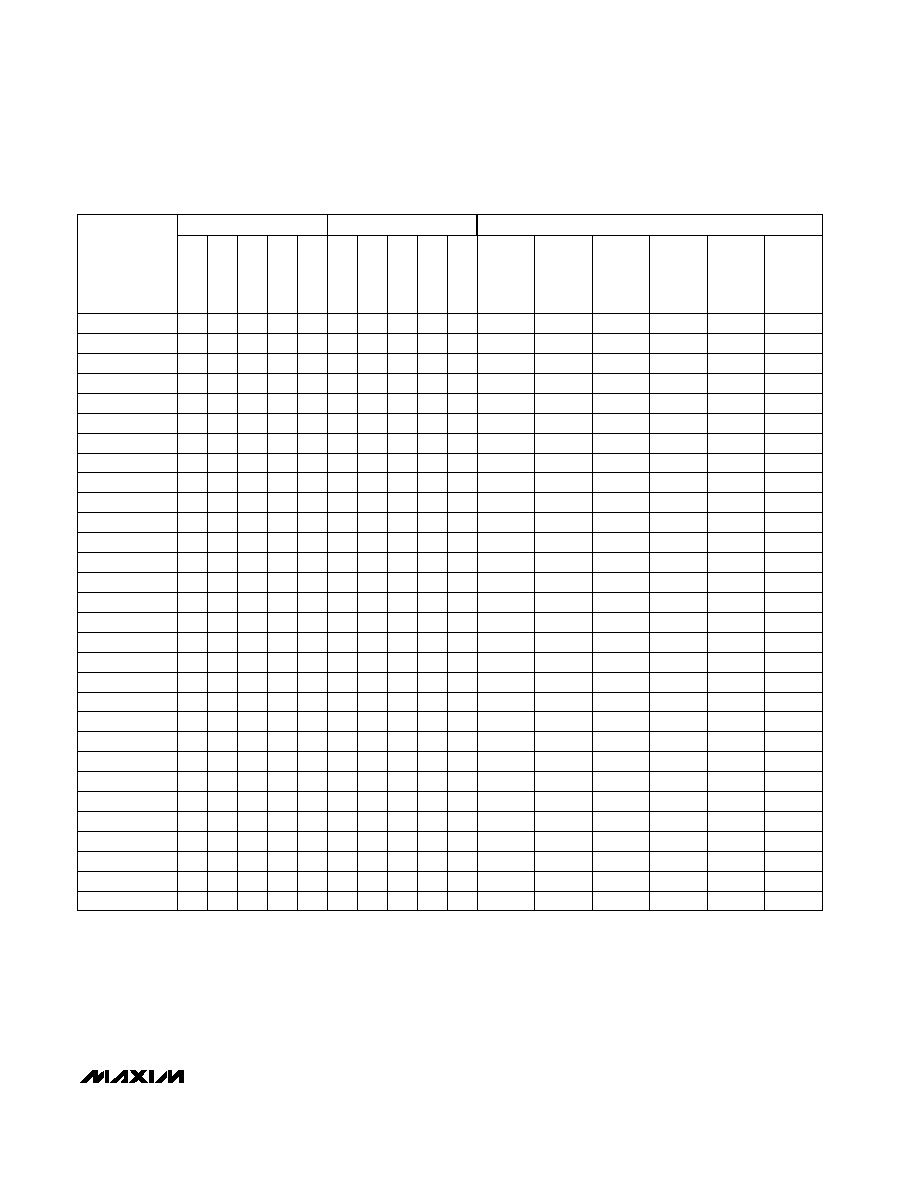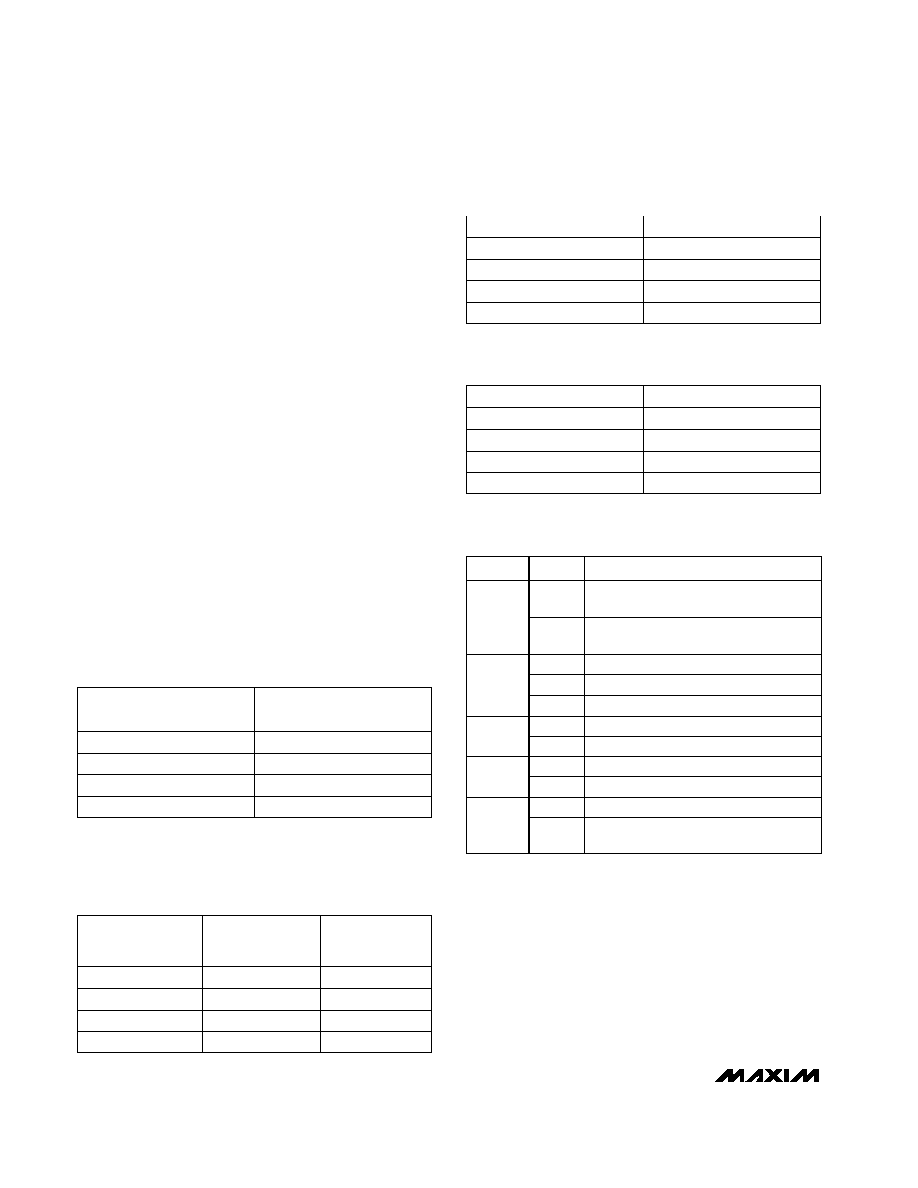 | –≠–ª–µ–∫—Ç—Ä–æ–Ω–Ω—ã–π –∫–æ–º–ø–æ–Ω–µ–Ω—Ç: SUPEVKIT | –°–∫–∞—á–∞—Ç—å:  PDF PDF  ZIP ZIP |

General Description
Maxim's line of supervisory circuits offers multiple wafer
trimmable options, leading to thousands of variations.
The large number of variations makes it difficult to offer
samples for each unique version. The Supervisory
Circuit Evaluation Kit (SUPEVKIT) has been developed
to emulate all the different variations of the MAX63XX
line. It reproduces the logic of this line but not the elec-
trical characteristics. Any device in these product fami-
lies can be emulated simply by changing jumper
settings and using a capacitor, if required.
The SUPEVKIT supports the following MAX63XX devices:
Features
o
Easy to Configure
o
Five Reset Outputs
Bidirectional
RESET
Open-Drain
RESET
Push/Pull
RESET
Push/Pull RESET
Open-Drain RESET
o
Adjustable Reset Timeout
o
Manual Reset Input
o
Adjustable Under/Overvoltage Supply Monitoring
o
Adjustable Watchdog Timeout
o
Reset Valid Down to V
CC
= 1V
o
Immune to Short Negative-Going V
CC
Transients
o
Assembled and Tested
SUPEVKIT
Supervisory Circuit Evaluation Kit
________________________________________________________________
Maxim Integrated Products
1
19-4779; Rev 0; 8/98
QTY
DESCRIPTION
R3, R4, R5,
R10, R13, R16
6
10k
, 5% resistors
DESIGNATION
Component List
For free samples & the latest literature: http://www.maxim-ic.com, or phone 1-800-998-8800.
For small orders, phone 1-800-835-8769.
Ordering Information
Component Suppliers
408-573-4159
408-573-4150
Taiyo Yuden
515-435-1824
515-435-1110
Central
Semiconductor
FAX
PHONE
SUPPLIER
MAX6334*
MAX6319LH
MAX6311
MAX6333*
MAX6318MH
MAX6310
MAX6332*
MAX6318LH
MAX6309
MAX6328
MAX6317H
MAX6308
MAX6327
MAX6316M
MAX6307
MAX6326
MAX6316L
MAX6306
MAX6337*
MAX6321HP
MAX6314
MAX6336*
MAX6320P
MAX6313
MAX6335*
MAX6319MH
MAX6312
MAX6322HP
MAX6315
MAX6305
SUPEVKIT
PART
R11, R12,
R14, R15, R17
5
100k
, 5% resistors
R18, R19
2
100k
trimmer potentiometers
Q1
1
2N3906 PNP transistor
Central Semiconductor CMPT3906
Q2≠Q5
4
2N3904 NPN transistors
Central Semiconductor CMPT3904
U1
1
MAX969EEE
U2
1
MAX6303CUA
U3
1
MAX6314US26D1-T
DESIGNATION QTY
DESCRIPTION
C1
1
470pF, ±20% ceramic capacitor
C2
0
Not installed (user supplied)
C3, C4
0
Not installed (user supplied)
C5
1
0.01µF, ±20% ceramic capacitor
C6
1
0.068µF, ±20% ceramic capacitor
C7
1
0.47µF, ±10% ceramic capacitor
Taiyo Yuden TMK316BJ474KL
JU1, JU2
2
3-pin jumpers
JU3, JU4, JU5
3
2-pin jumpers
R1, R8
2
30k
, 5% resistors
R2, R9
2
39k
, 5% resistors
R6, R7
2
1M
, 5% resistors
+25∞C
TEMPERATURE
*
Future product--contact factory for availability.

SUPEVKIT
Supervisory Circuit Evaluation Kit
2
_______________________________________________________________________________________
Quick Start
Before you begin, you will need the following equip-
ment:
∑
A 1V to 5.5V variable DC power supply
∑
A voltmeter
∑
A trimmer potentiometer adjustment tool (small
flat-blade screwdriver)
Table 1 lists the features that can be emulated by the
SUPEVKIT. Refer to the corresponding device's data
sheet to look up the specifications for these features.
To configure the supervisory circuit, take the following
steps:
1) Install jumpers JU2≠JU5 in the positions listed in
Table 1.
Example: For the MAX6320PUK33BX-T, the jumper
settings are JU2 = 2-3, JU3 = open, JU4 = closed,
and JU5 = closed.
2) Set the reset timeout period, referring to Table 2 to
determine which trace (if any) needs to be cut.
Example: For the MAX6320PUK33BX-T, the reset
timeout period is 20ms, so it is necessary to cut the
trace between C5 and C6.
3) If the selected supervisory circuit has a watchdog
timeout feature, consult Table 3 to determine which
capacitor value to use for C2 and which position to
use for jumper JU1.
Example: For the MAX6320PUK33BX-T, the watch-
dog timeout period is 71ms. Use a value of 0.039µF
for capacitor C2. Jumper JU1 should be in the 2-3
position.
4) Turn on the power supply and connect it to the volt-
meter. Set the power-supply voltage to the desired
reset threshold voltage. The accuracy of the trip
threshold is determined by the accuracy of the volt-
meter.
Example: For the MAX6320PUK33BX-T, set the
power supply to 3.30V.
5) Connect the power supply to the SUPEVKIT at the
pads labeled V
CC
and GND. The SUPEVKIT oper-
ates from +1V to +5.5V.
The supply voltage must
not exceed +5.5V.
6) Connect the voltmeter to the pads labeled TP and
GND.
7) Turn potentiometer R18 clockwise until the volt-
meter reading goes high (approximately equal to
V
CC
). Then slowly turn potentiometer R18 counter-
clockwise until the voltmeter reading decreases
to 0. The reset threshold voltage on the SUPEVKIT
is now set.
8) Connect the SUPEVKIT to the test circuit, using the
device inputs and outputs listed in Table 1.
Example: The MAX6320PUK33BX-T uses pads MR,
WDI, and RESETOD.
Detailed Description
Watchdog Circuit
A watchdog circuit consists of an input (WDI) and an
output (RESET). If WDI is not toggled within the watch-
dog timeout period (which is a predetermined amount
of time), then a RESET is issued. Disable the watchdog
function by installing jumper JU3.
Capacitor C2 selects the watchdog timeout period. To
choose a value for this capacitor, refer to Table 3 or use
the following formula:
C2 = t
WD
/ 2.67
where t
WD
is the watchdog timeout period in µs and C2
is in pF.
The SUPEVKIT features two modes of watchdog timer
operation: normal mode and extended mode. In normal
mode (JU1 = 2-3), the formula shown above deter-
mines the watchdog timeout period. In extended mode
(JU1 = 1-2), the watchdog timeout (t
WD
) is multiplied by
a factor of 500.
Note:
In extended mode operation, leaving pad WDI
floating disables the watchdog feature.
Reset Outputs
The SUPEVKIT has five reset outputs: active-low
push/pull (RESET), active-low bidirectional (RESETBD),
active-low open-drain (RESETOD), active-high push/pull
(RESET), and active-high open-drain (RESETOD).
These outputs are valid down to V
CC
= 1V. The reset
timeout period is the amount of time RESET is asserted
after V
CC
rises above the reset threshold voltage.
Capacitors C1, C5, C6, and C7 set the reset timeout
period. The SUPEVKIT comes with the period set at
1120ms. To change the period to either 1ms, 20ms, or
140ms, cut a PC board trace as specified in Table 2.
The bidirectional reset output of the SUPEVKIT is valid
only for reset threshold voltages down to 2.63V.
Undervoltage Setup
Potentiometer R18 sets the undervoltage reset thresh-
old. To enable the undervoltage reset feature, install the
jumpers in the positions specified in Table 4. Use a volt-
meter to set the power-supply voltage to the desired trip

SUPEVKIT
Supervisory Circuit Evaluation Kit
_______________________________________________________________________________________
3
Note:
All devices require V
CC
and GND connections.
MAX6305
X
X
X
2-3
closed
open
open
MAX6306
X
X
X
R18
2-3
closed
closed
open
MAX6307
X
X
X
R18
open
closed
closed
open
MAX6308
X
X
X
2-3
closed
open
open
MAX6309
X
X
X
R18
2-3
closed
closed
open
MAX6310
X
X
X
R18
open
closed
closed
open
MAX6311
X
X
X
2-3
closed
open
open
MAX6312
X
X
X
R18
2-3
closed
closed
open
MAX6313
X
X
X
R18
open
closed
closed
open
MAX6314
X
X
R18
2-3
closed
closed
closed
MAX6315
X
X
R18
2-3
closed
closed
closed
MAX6316L
X
X
X
C2
R18
2-3
open
closed
closed
MAX6316M
X
X
X
C2
R18
2-3
open
closed
closed
MAX6317H
X
X
X
C2
R18
2-3
open
closed
closed
MAX6318LH
X
X
X
C2
R18
2-3
open
closed
closed
MAX6318MH
X
X
X
C2
R18
2-3
open
closed
closed
MAX6319LH
X
X
X
R18
2-3
closed
closed
closed
MAX6319MH
X
X
X
R18
2-3
closed
closed
closed
MAX6320P
X
X
X
C2
R18
2-3
open
closed
closed
MAX6321HP
X
X
X
C2
R18
2-3
open
closed
closed
MAX6322HP
X
X
X
R18
2-3
closed
closed
closed
MAX6326
X
R18
2-3
closed
closed
closed
MAX6327
X
R18
2-3
closed
closed
closed
MAX6328
X
R18
2-3
closed
closed
closed
MAX6332
X
R18
2-3
closed
closed
closed
MAX6333
X
R18
2-3
closed
closed
closed
MAX6334
X
R18
2-3
closed
closed
closed
MAX6335
X
X
R18
2-3
closed
closed
closed
MAX6336
X
X
R18
2-3
closed
closed
closed
MAX6337
X
X
R18
2-3
closed
closed
closed
RSTIN2
OVERSTIN
MR
WDI
RESET
RESETOD
RESET
RESETOD
RESETBD
INSTALL
ADJUST
JU2
JU3
JU4
JU5
RSTIN1
Table 1. Devices and Settings
DEVICE INPUTS
DEVICE OUTPUTS
USER SETTINGS
DEVICE

voltage. Connect a voltmeter or oscilloscope to the TP
pad. Turn R18 clockwise until the voltage at TP goes
high (V
CC
). Slowly turn R18 counterclockwise until the
voltage goes low. The SUPEVKIT is now set to trip when
the supply voltage decreases to this voltage. To disable
undervoltage reset, open jumper JU4.
Overvoltage Setup
Potentiometer R19 sets the overvoltage reset threshold.
To enable the overvoltage reset feature, install the
jumpers in the positions specified in Table 5. Use a volt-
meter to set the power-supply voltage to the desired trip
voltage. Connect a voltmeter or oscilloscope to the TP
pad. Turn R19 clockwise until the voltage at TP goes
high (V
CC
). Slowly turn R19 counterclockwise until the
voltage goes low. The SUPEVKIT is now set to trip when
the supply voltage increases to this voltage. To disable
overvoltage reset, move JU2's shunt to position 2-3.
Note: If the voltage at TP does not pull high after turning
R19 clockwise for 14 turns, turn R18 counterclockwise.
The undervoltage trip point might be set higher than the
supply voltage, holding the SUPEVKIT in reset.
Negative-Going V
CC
Transients
The SUPEVKIT is relatively immune to short-duration
negative-going transients (glitches). If more immunity is
required, install 0.1µF bypass capacitors for C3 and C4.
SUPEVKIT
Supervisory Circuit Evaluation Kit
4
_______________________________________________________________________________________
MINIMUM
TIMEOUT PERIOD (ms)
CUT TRACE
BETWEEN:
1
C1 and C5
20
C5 and C6
140
C6 and C7
1120
No cutting necessary*
JUMPER
STATE
JU2
2-3
JU3
Closed
JU4
Closed
JU5
Closed
Table 2. Selecting the Reset Timeout
Period
Table 4. Undervoltage Setup
Table 5. Overvoltage Setup
JUMPER
STATE
JU2
1-2
JU3
Closed
JU4
Closed
JU5
Closed
*
Default jumper state.
MINIMUM
WATCHDOG
TIMEOUT (t
WD
)
C1 VALUE
JU1 STATE
4.3ms
2200pF ±20%
2-3
71ms
0.039µF ±20%
2-3
1.12sec
1200pF ±20%
1-2
17.9sec
0.018µF ±20%
1-2
Table 3. Capacitance Values for
Common Watchdog Timeout Periods
JUMPER
STATE
FUNCTION
JU1
1-2
Watchdog-select connected to V
CC
(extended mode).
Closed*
2-3*
Watchdog-select connected to GND
(normal mode).
JU2
1-2
Use R19 to set overvoltage threshold.
Open
2-3*
Disable overvoltage comparator.
JU3
Open
Use OVRSTIN pad.
Open
Use watchdog function (insert C2).
JU5
Closed*
Disable watchdog function.
JU4
Open
Use RSTIN1 pad.
Closed*
Use R18 to set undervoltage threshold.
Use RSTIN2 pad.
Disable RSTIN2 undervoltage
comparator.
*
Default jumper state.
Table 6. Jumper Function Table

SUPEVKIT
Supervisory Circuit Evaluation Kit
_______________________________________________________________________________________
5
Pad Description
PAD NAME
DESCRIPTION
V
CC
Supply Voltage and Reset Threshold Monitor Input (1V to 5.5V)
GND
Ground
WDI
Watchdog Input. A rising or falling transition must occur on this input within the selected watchdog timeout period, or a
reset will occur.
RSTIN1
Undervoltage Reset Comparator Input. Asserts reset when the monitored voltage falls below the programmed thresh-
old. Set the reset threshold with an external resistor-divider.
RSTIN2
Undervoltage Reset Comparator Input. Asserts reset when the monitored voltage falls below the programmed
threshold. Set the reset threshold with an external resistor-divider.
OVRSTIN
Overvoltage Reset Comparator Input. Asserts reset when the monitored voltage exceeds the programmed thresh-
old. Set the reset threshold with an external resistor-divider.
MR
Manual Reset Input. A logic low on MR asserts reset. Reset remains asserted as long as MR is low, and for the
duration of the reset timeout period (t
RP
) after the reset condition is terminated.
RESET
Push/Pull, Active-High Reset Output. RESET changes from low to high whenever a reset condition occurs. After the
reset condition is terminated, RESET remains high for the duration of the reset timeout period and then goes low.
RESETOD
Open-Drain, Active-High Reset Output. RESETOD is asserted high whenever a reset condition occurs. After the reset
condition is terminated, RESETOD remains high for the duration of the reset timeout period.
RESET
Push/Pull, Active-Low Reset Output. RESET changes from high to low whenever a reset condition occurs. RESET
remains low for the duration of the reset timeout period. After the reset condition is terminated, RESET remains low
for the duration of the timeout period and then goes high.
RESETOD
Open-Drain, Active-Low Reset Output. RESETOD is asserted low whenever a reset condition occurs. After the reset
condition is terminated, RESETOD remains low for the duration of the reset timeout period.
RESETBD
Bidirectional, Active-Low Reset Output. RESETBD changes from high to low whenever a reset condition occurs.
After the reset condition is terminated, RESETBD remains low for the duration of the reset timeout period and then
goes high. In addition to the normal N-channel pull-down, RESETBD has a P-channel pull-up transistor in parallel
with a 4.7k
resistor to facilitate connection to µPs with bidirectional resets. See the MAX6314 data sheet.




